Come join us now, and enjoy playing your beloved music and browse through great scores of every level and styles!
Can’t find the songbook you’re looking for? Please, email us at: sheetmusiclibrarypdf@gmail.com We’d like to help you!
Table of Contents
Happy heavenly birthday, Buck Clayton, born on this day in 1911
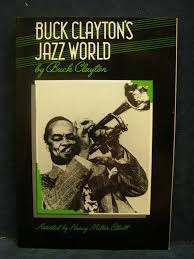
Best Sheet Music download from our Library.
Search your favorite sheet music in the Sheet Music Catalog
The Kansas City Flame: Celebrating the Elegant Artistry of Buck Clayton
On November 12, 1911, in the heartland of America, Parsons, Kansas, a child was born who would become one of the most defining and melodically gifted voices of the swing era. His name was Wilbur Dorsey “Buck” Clayton, and his trumpet would not merely play notes, but would sing stories—stories of smoky dance halls, of sophisticated arrangements, of the raw blues of Kansas City, and of the polished sheen of New York’s grandest ballrooms. Buck Clayton’s career is a masterclass in musical evolution, a journey from the territorially raw to the internationally renowned, all the while maintaining a signature sound of pure, lyrical elegance. He was a cornerstone of the Count Basie Orchestra during its most celebrated period, a sought-after collaborator for the greatest vocalists of his time, and a composer and arranger of enduring beauty.
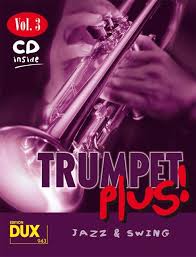
Please, subscribe to our Library.
If you are already a subscriber, please, check our NEW SCORES’ page every month for new sheet music. THANK YOU!
Early Years: From the Heartland to the Heavenly River
Clayton’s musical upbringing was steeped in the sounds of the African-American church and the nascent jazz records that filtered into the Midwest. His father, a dedicated amateur musician, was his first and most important teacher, providing Buck with a solid foundation in music theory and the technical proficiency of the trumpet. This early, structured training would become the bedrock of his style, setting him apart from many of his contemporaries who relied more purely on instinct and ear.
The first major turning point arrived not in New York or Chicago, but in Shanghai, China. In 1934, after honing his skills in California with various bands, Clayton received an offer that seemed to come from another world: to lead The Harlem Gentlemen, a 14-piece American band at the Canidrome Ballroom in Shanghai’s International Settlement. This two-year sojourn was transformative. It forced the young musician into a position of leadership, demanding a wide and sophisticated repertoire to cater to a diverse, international audience. He played everything from hot jazz to popular waltzes and tangos, refining his versatility and his ability to craft a sound that was both exciting and palatable. When he returned to the United States in 1936, he was a polished, professional bandleader, ready for the big time.
That big time had a name and a place: Count Basie and Kansas City.
The Basie Crucible: Forging the Kansas City Sound
Clayton joined the Count Basie Orchestra in 1936, just as it was poised to explode onto the national scene. This band, fresh from the legendary Reno Club in Kansas City, embodied a new, streamlined, and powerfully rhythmic approach to big band jazz. It was the perfect environment for Clayton’s talents. The Basie band was built on the tension and release of the riff—short, repeating melodic phrases traded between sections—and the unparalleled rhythm section of Basie himself, Freddie Green on guitar, Walter Page on bass, and Jo Jones on drums, known collectively as the “All-American Rhythm Section.”
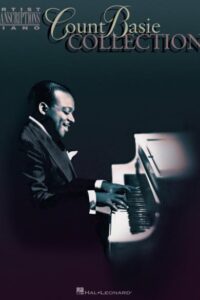
Within this powerhouse, Clayton found his musical soulmate in fellow trumpeter Harry “Sweets” Edison. Together, they formed one of the most celebrated trumpet tandems in jazz history. Their partnership was a study in complementary styles. Where Sweets was known for his sparse, witty, and blues-drenched phrases (often using a Harmon mute for his signature buzzy sound), Clayton was the lyricist. He played the “lead” trumpet parts with a full, round, and breathtakingly beautiful tone. His solos were not collections of lightning-fast runs, but thoughtfully constructed melodies that soared above the ensemble with a vocal quality.
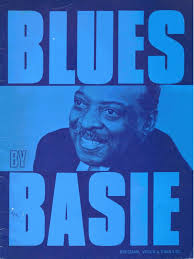
This period, from 1936 to 1943, produced some of the most iconic recordings in jazz. Tracks like “Lester Leaps In,” “Jumpin’ at the Woodside,” and “One O’Clock Jump” are quintessential examples of the Kansas City swing style. Listen to Clayton’s solos on these records; they are models of logical development and swing. He builds his ideas with the narrative arc of a storyteller, each phrase leading inevitably to the next, always serving the song, and always, always swinging. His work on ballads, such as his exquisite opening statement on “Blue and Sentimental,” is a masterclass in how to convey deep emotion without a hint of sentimentality. The tone is pure gold, the vibrato warm and controlled.

Musical Style and Harmonic Language: The Poet of the Trumpet
Buck Clayton’s style is often described as “lyrical,” but this term only scratches the surface. His approach was a sophisticated fusion of several key elements:
- The Golden Tone: The most immediate identifier of a Buck Clayton performance is his sound. It was never brash or cutting, even in the heat of an up-tempo number. It was full, centered, and possessed a luminous, vocal quality. He believed in the beauty of the note itself.
- Melodic Invention: Clayton was a melodist first and a virtuoso second. He prioritized the shape and contour of a solo over technical display. His improvisations felt composed, logical, and memorable. He had an uncanny ability to weave new, inventive lines that still felt intimately connected to the original melody of the tune.
- Swing and Phrasing: His sense of time was impeccable. He swung with a relaxed, effortless grace, often playing just behind the beat to create a sense of laid-back tension. His phrasing was conversational, leaving spaces that were as meaningful as the notes he played, much like his friend and collaborator, tenor saxophonist Lester Young.
- Harmonic Sophistication: Unlike some of the earlier New Orleans-style trumpeters who relied on a more rudimentary harmonic palette, Clayton was fully conversant with the advanced chord changes of the swing era. His early theoretical training allowed him to navigate complex harmonies with ease, but he always did so with taste. He used passing chords, substitutions, and altered notes not to show off, but to enrich the melodic line. He was a bridge between the straightforward harmony of early jazz and the more complex language of bebop, though he never fully embraced the latter’s aesthetic.
His style stood in contrast to the fiery, high-note pyrotechnics of a Harry James or the revolutionary, harmonically dense language of Dizzy Gillespie. Clayton’s was the path of elegance, subtlety, and profound musicality.
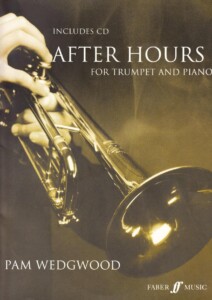
Compositions and Arrangements: The Architect of Swing
While celebrated as a soloist, Buck Clayton’s contributions as a composer and arranger are equally significant. He penned a number of classics for the Basie band, including the driving “Topsy” and the elegant “Avenue C.” His compositions were perfectly tailored to the Basie aesthetic: blues-based, riff-heavy, and rhythmically irresistible.

However, his genius as an arranger reached its zenith in the 1950s, after his days as a touring big band musician were largely over. A series of albums under his own name, often for the Columbia label, showcased his mature architectural vision for the jazz ensemble. The most famous of these are the “Jam Session” albums, which featured all-star lineups.
These were not the chaotic “cutting contests” the name might imply. Clayton meticulously pre-arranged these sessions. He would write sophisticated frameworks—introductions, backgrounds, rhythmic backdrops, and endings—that provided structure and variety, within which the star soloists could improvise freely. This approach prevented the monotony that could sometimes plague long, blowing sessions and resulted in recordings of remarkable cohesion and invention. Albums like Jumpin’ at the Woodside and All the Cats are testaments to his skill as a musical director who could harness great individual talents into a unified and swinging whole.
Fabled Collaborations: The Accompanist Par Excellence
Buck Clayton’s lyrical sensitivity and impeccable time made him the accompanist of choice for the most demanding and brilliant vocalists of the era. His most legendary partnership was with Billie Holiday.

The musical and personal kinship between Clayton and Holiday was profound. They shared a similar approach to phrasing—relaxed, behind the beat, and deeply expressive. On the seminal recordings collected in The Quintessential Billie Holiday volumes (1935-1939), Clayton is more than a sideman; he is a duet partner. His obbligatos behind her voice are like a second, wordless vocal, answering her phrases, cushioning her emotions, and elevating every song. Listen to “He’s Funny That Way” or “I Must Have That Man” to hear a perfect musical conversation. Lady Day herself said of him, “I always wanted Buck’s horn behind me.”

Beyond Holiday, Clayton’s trumpet graced essential recordings with a who’s who of jazz and popular music. He was a key player in the classic small-group sessions led by pianist Teddy Wilson, which often featured Lester Young. He worked extensively with the powerful blues shouter Jimmy Rushing. In the 1950s, he was a pillar of the “Jazz at the Philharmonic” tours, holding his own alongside younger bebop-influenced players. He even enjoyed a fruitful late-career partnership with his old friend, fellow Basie-alum, and fellow lyrical genius, tenor saxophonist Buddy Tate, their shared history evident in every note they played together.
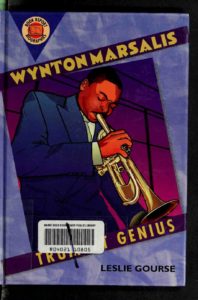
Later Years and Legacy: The Teacher and Keeper of the Flame
The 1950s were a prolific decade for Clayton, but the 1960s brought professional challenges. A chronic lip problem, which required surgery, severely curtailed his ability to play the trumpet. For a lesser musician, this might have been the end. For Clayton, it was a pivot. He turned his full attention to arranging, leading all-star groups (where he would conduct and arrange, leaving the trumpet solos to others), and, most importantly, to education.
He became a revered elder statesman of jazz, teaching and conducting workshops around the world. He co-wrote his autobiography, Buck Clayton’s Jazz World, a vital and insightful firsthand account of the swing era. He led a celebrated big band in Europe and continued to write music of great beauty and swing until his death in 1991.
Buck Clayton’s legacy is immense. He never chased trends or altered his fundamental approach to suit changing tastes. He represented the highest standard of the swinging, melodic trumpeter. His influence can be heard in the work of later masters like Harry “Sweets” Edison (who, in turn, influenced Miles Davis), Clark Terry, and even in the lyrical modernism of a player like Wynton Marsalis.
He was a musician who understood that true power in jazz does not always come from volume or velocity, but from tone, taste, and the timeless ability to tell a story through a melody. From the dusty plains of Kansas to the bustling ballroom of Shanghai, from the roaring engine of the Basie band to the intimate studio with Billie Holiday, Buck Clayton carried a flame—a flame of golden sound, of unwavering swing, and of profound musical intelligence. On the anniversary of his birth, we remember him not just as a historical figure, but as a perpetual source of beauty and swing in the vast and ever-evolving story of jazz.
Buck Clayton – Jumpin’ At The Woodside ( Full Album )
Trumpet – Buck Clayton, Joe Newman, Ruby Braff…. Trombone – Benny Green, Dicky Harris, Trummy Young, Urbie Green…. Bass – Milton Hinton, Walter Page…. Clarinet – Woody Herman…. Drums – Jo Jones…. Guitar – Freddie Green, Steve Jordan…. Piano – Al Waslohn, Billy Kyle, Jimmy Jones
Track List:
A1 Rock-A-Bye Basie 8:10 A2 Jumpin’ At The Woodside 10:40 B1 Blue And Sentimental 6:30 B2 Broadway 9:25
Recorded – March 15, 1955 (A1), March 31 and August 13, 1954 (A2), August 13, 1954 (B1) and March 15, 1955 (B2) ..
Search your favorite sheet music in the category of Jazz, Blues, Soul, & Gospel.
Buck Clayton‘s Jam Session – Robbins’ Nest
Buck Clayton’s Jam Session – Robbins’ Nest (1953)
Personnel: Buck Clayton, Joe Newman (trumpet), Urbie Green, Henderson Chambers (trombone), Lem Davis (alto sax), Julian Dash (tenor sax), Charles Fowlkes (baritone sax), Freddie Green (guitar), Sir Charles Thompson (piano), Walter Page (bass), Jo Jones (drums)
from the album ‘THE HUCKLE-BUCK AND ROBBINS’ NEST’ (Columbia Records)
